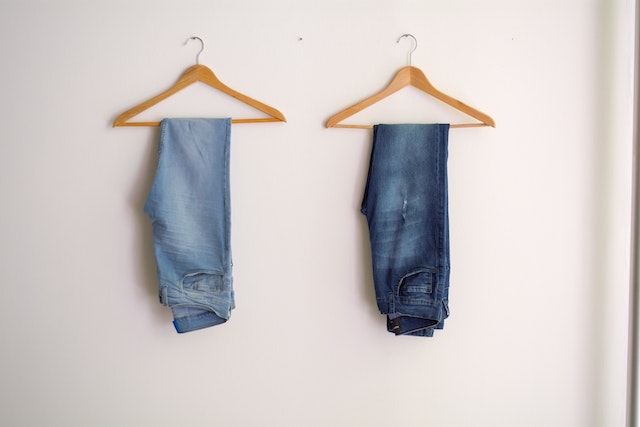Written by: Olivera Tolimir
Anyone learning a new language feels the need to shout WHAT when talking with a fast-speaking native. Of course, we compose ourselves and ask politely, Excuse me? / Could you repeat, please?
Translated to Serbian, the options are: Molim? and Možete li da ponovite, molim Vas?
But even the politest person on Earth has to use the word what (Serbian: šta) once in a while. Not to scream at native speakers but to ask, for example, What is this? In those moments, students learning Serbian stumble upon an obstacle. Should I use šta or što? What is the difference between šta and što in Serbian?
Lucky for you, we’re here to help! Here comes the profound explanation of the differences between the words šta and što in Serbian!

The Pronoun Šta (Šta? =What?)
Šta as an interrogative pronoun
The pronoun šta is most famous for its interrogative function. It means what, so we use it as such. For example:
- Šta je ovo? (What is this?)
- Šta studiraš? (What do you study?)
- Šta radiš? (What are you doing?)
It’s simple and works the same as in English. So, there’s no need to make it complicated.
There’s one thing you should remember, though. You won’t use šta in Serbian questions any time there’s a what in English. There are some different sentence structures in the two languages. For example:
- Kako se zoveš? (What’s your name?) — In this case, the Serbian sentence is more similar to the English: How are you called, so we use the Serbian word kako (how).
- Koliko je sati? (What time is it?) — It directly translates as How many hours is it?
- Koja ti je omiljena hrana? (What’s your favorite food?) — The Serbian sentence structure is: Which food is your favorite?
Šta as a relative pronoun
Just like in English, the word šta (what) can serve as a relative pronoun. For example:
- Ne razumem šta se upravo desilo. (I don’t understand what just happened.)
- Ne znam šta je ovo. (I don’t know what this is.)
- Ne znam šta bih bez tebe. (I don’t know what I would do without you.)
- Reci mi šta želiš. (Tell me what you want.)

The Pronoun Što
Što? = Why?
In everyday communication, the short word što is used instead of the full form zašto (why). For example:
- Što pitaš? (Why do you ask?)
- Što to misliš? (Why do you think that?)
- Što si tužan/tužna? (Why are you sad?) — Note: We use the word tužan when speaking with a man, and tužna when speaking with a woman.
- Što sve moram da ponavljam sto puta?! (Why do I have to repeat everything 100 times?!)
Što as an intensificator
If you’d like to emphasize the relation between two variables, use the pronoun što + comparative.
Comparatives are words such as better, higher, nicer, worse, darker, lighter, and so on. They can be adjectives or adverbs. They show that something/someone possesses a quality to a higher degree than something/someone else.
So, how to use the pronoun što with adjectives? Take a look at the examples:
- Što ranije završiš domaći, ranije ćeš se igrati. (The sooner you finish your homework, the sooner you’ll get to play.)
- Što više učim, manje znam. (The more I study, the less I know.)
- Što je duži put, češće moraš da praviš pauze. (The longer the road, more stops you have to make.)
- Što više treniraš, bićeš zgodniji. (The more you work out, the more handsome you’ll be.)

The combination of the pronoun što with comparative is also used to emphasize the highest possible quality of something. For example:
- Nacrtaj patku što lepše umeš. (Draw a duck as beautiful as you can.)
- Otpevaću pesmu što bolje umem. (I’ll sing a song the best as I can.)
- Pospremiću stan što brže je moguće. (I’ll tidy the apartment as fast as possible.)
Što as a relative pronoun
The biggest issue with the pronouns što and šta in Serbian is their relative use. People often ask if they should say: Ponovi što si rekao or Ponovi šta si rekao. The truth is that both forms are correct! But it’s not always the case.
The easiest rule to remember is that there has to be another pronoun or noun before the pronoun što. For example:
- Ponovi to što si rekao. (Repeat what you said.) — The word to means that. So, the direct translation would be: Repeat that what you said.
- On voli to što radi. (He likes what he does.) — The direct translation: He likes that what he does.
- Ona ne voli ono što je Milan spremio za večeru. (She doesn’t like what Milan prepared for dinner.) — The direct translation: She doesn’t like that what Milan prepared for dinner.
- To što radiš ima ozbiljne posledice. (What you’re doing bears serious consequences.) — The direct translation: That what you’re doing has serious consequences.
The difference between the use of the pronouns šta and što in Serbian and Croatian

One of the reasons our students find the difference between the pronouns što and šta in Serbian confusing is the Croatian language. As we’ve already mentioned, Serbian and Croatian are linguistically the same language that is separated for political reasons.
There are some differences, of course. For example, a small part of the vocabulary is different (while in Serbia, bread-lovers eat hleb, they eat kruh in Croatia). There are also slight differences in grammar, but they’re even smaller than between British and American English.
Anyhow, one of the differences comes from the use of the pronouns šta and što in Serbian and Croatian. We’ve explained their use in Serbian. In Croatian, some of the rules are the opposite. For example, if you ask a Croatian and a Serbian: Što to radiš, you’ll get different answers. A Serbian will answer: Čitam knjigu (I’m reading a book), while a Croatian will tell you: Zato što je zanimljiva (Because it’s interesting). Basically, in the Serbian version, the question was: Why are you doing that, and in the Croatian: What are you doing? So, in Croatian: što = what, and in Serbian: što = why and šta = what.
Who would’ve thought one letter could cause such a headache?! If you’d like to get rid of it, choose one of our awesome Serbian teachers and book a private class!



